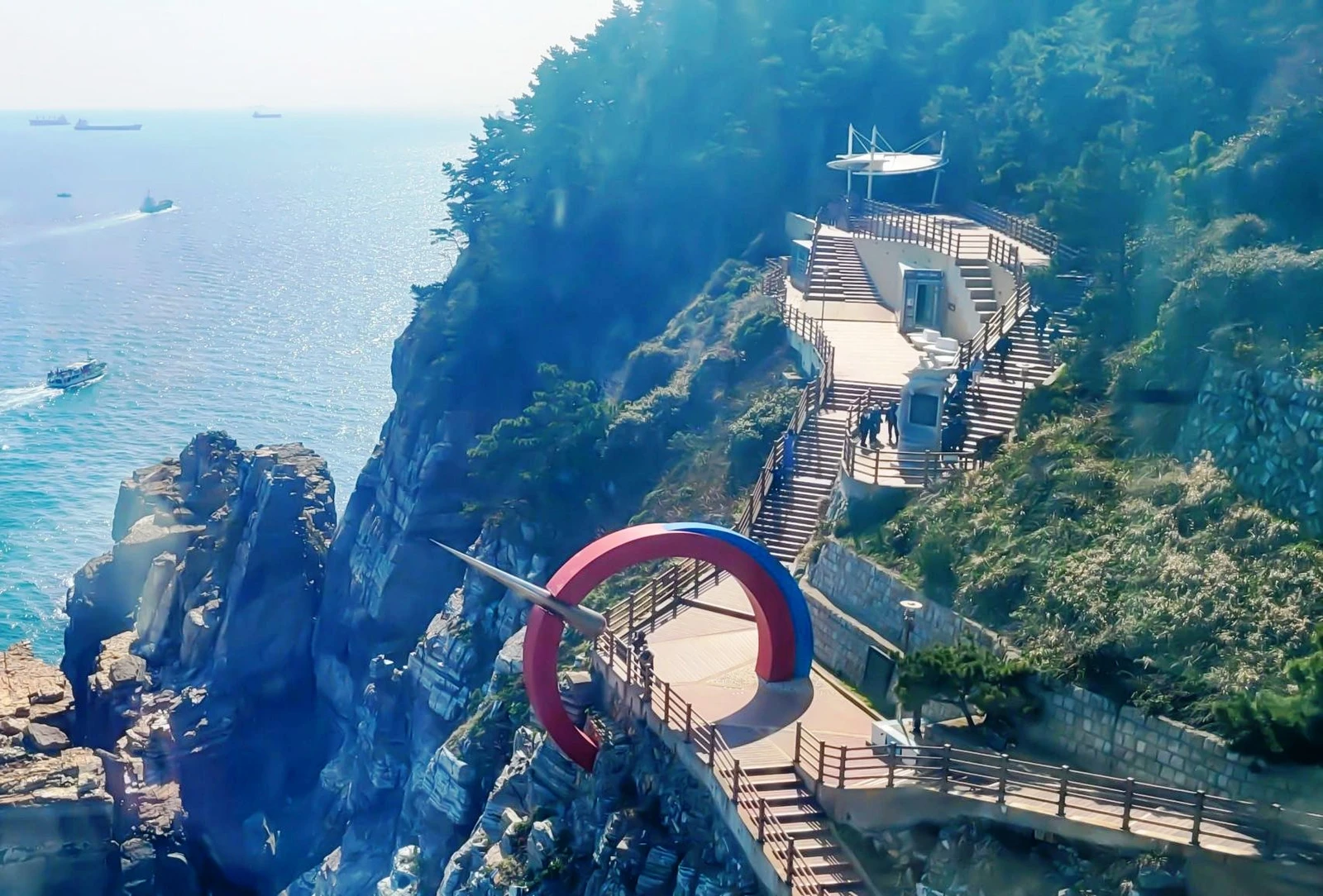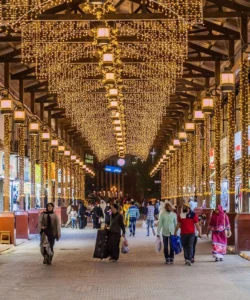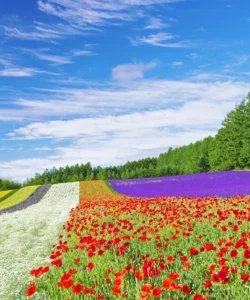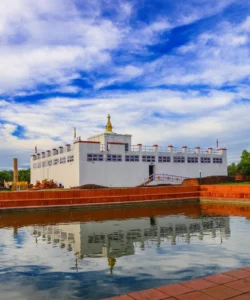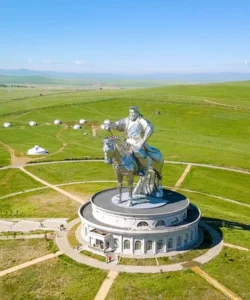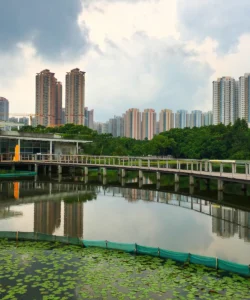Taejongdae Park is a stunning natural park located on the southernmost tip of Yeongdo Island in Busan, South Korea. Renowned for its dramatic cliffs, lush pine forests, and breathtaking views of the sea, it offers a refreshing escape from the urban bustle and a popular destination for both locals and tourists seeking natural beauty and a tranquil coastal experience.
![]()
Name: Taejongdae Park (태종대유원지; 太宗臺遊園地)
Address: 24 Jeonmang-ro, Yeongdo-gu, Busan, South Korea.
How to get there:
Taejongdae Park is relatively easy to reach from central Busan:
- From Busan Station (Busan Metro Line 1): Take Bus 88 or 101 from the bus stop across the street from Busan Station. The bus ride takes approximately 30-40 minutes and drops you off right at the park’s main entrance.
- From Nampo-dong/Jagalchi Market Area (Busan Metro Line 1): Take Bus 8, 30, 66, or 88 from bus stops in this area. The journey is around 20-30 minutes.
- By Subway + Bus: Take Busan Metro Line 1 to Nampo Station (남포역) or Taejongdae Station (태종대역) (though not directly at the park, it’s a nearby station on the extension) and then transfer to one of the local buses mentioned above.
- By Taxi/Ride-Sharing Services: Taxis are readily available throughout Busan and can take you directly to the park’s main entrance.
- Cruise/Ferry: Some local pleasure boats offer trips around the coast of Taejongdae, providing unique views of the cliffs from the sea.
Landscape and Architecture:
Taejongdae Park’s landscape is defined by its rugged coastline, dense forests, and strategic viewpoints:
- Dramatic Cliffs and Rock Formations: The park’s most striking feature is its towering, jagged sea cliffs that plunge dramatically into the ocean. These cliffs have been sculpted by centuries of wind and waves, revealing unique rock formations.
- Dense Pine Forest: The park is covered by a lush, old-growth pine forest, offering shaded pathways and a refreshing atmosphere even on warm days. The dense greenery contrasts beautifully with the blue of the sea.
- Observation Deck: A multi-tiered observation deck offers panoramic vistas of the open sea, the unique rock formations, and on clear days, even the distant Tsushima Island of Japan.
- Yeongdo Lighthouse: An iconic white lighthouse (Yeongdo Lighthouse) stands proudly on one of the highest cliffs, guiding ships through the Busan Strait. It’s a popular spot for photos and offers its own smaller observation area.
- Taejongsa Temple: A small, traditional Buddhist temple nestled within the park, providing a peaceful spot for reflection.
- Gumyeongsa Temple (Temple with 3,000 Hands of Guanyin): Located within the park, known for its large golden statue of a Bodhisattva with numerous arms.
- Taejongdae Danubi Train: To make it easier for visitors to explore the sprawling park (as private vehicles are generally not allowed inside), a circular sightseeing train called the Danubi Train operates, stopping at major viewpoints and attractions within the park. This is a characteristic feature of the park.
- Dinosaurs Statues: Adding a touch of whimsy, there are several large dinosaur statues located near the observation deck, making it fun for families.
- Mangbuseok (Taejongdae Rock): A famous rock formation linked to a legend of a woman waiting for her husband, adding a romantic and poignant cultural layer to the natural scenery.
What makes it famous:
Taejongdae Park is famous for:
- Spectacular Coastal Views: It offers some of Busan’s most magnificent and dramatic coastal scenery, particularly the sweeping vistas of the open sea and the rugged cliffs.
- Historical Significance: The park is named after King Taejong Muyeol (604-661 CE) of the Silla Dynasty, who supposedly visited the area to practice archery. Later, King Taejong of the Joseon Dynasty also enjoyed visiting this scenic spot for recreation.
- Lighthouse Icon: The Yeongdo Lighthouse is an important maritime landmark and a popular photographic subject.
- Relaxing Retreat: Its lush forests and fresh sea air provide a perfect escape from the city, allowing visitors to enjoy nature, walk, and relax.
- Danubi Train: The convenient and charming Danubi sightseeing train makes the park’s vastness accessible to all, including families and those with mobility challenges.
- Romantic Destination: With its beautiful views and tranquil atmosphere, it’s a favored spot for couples, particularly for sunset viewing.
Differences from some other wonders:
Taejongdae Park distinguishes itself from other famous parks and coastal areas in several ways:
- Coastal Cliffs with Deep Historical/Royal Connection: While many coastal parks offer cliffs, Taejongdae’s specific connection to two kings named Taejong gives it a unique historical and royal resonance. It’s a natural wonder that was also a royal retreat, rather than just a public park.
- Danubi Train as Core Experience: The Danubi Train is not just an optional transport; it’s an integral part of the Taejongdae experience. For many, riding the train and stopping at its specific scenic points defines their visit, making the park’s accessibility via this unique internal transport a key differentiator from other large parks where walking is the sole means of exploration.
- Dramatic, Jagged Cliff Formations: Compared to the more gentle or sandy coastlines of some other parks, Taejongdae’s cliffs are exceptionally rugged, jagged, and sheer, offering a very dramatic and distinct geological profile.
- Pine Forest Dominance: The prevalence of a dense, old-growth pine forest covering the park offers a specific type of natural beauty and aroma that distinguishes it from more varied deciduous forests or open grasslands of other parks.
- Strategic Military Past (Implicit): While not explicitly military like Hwaseong Fortress, its location at the southernmost tip of an island and its dramatic cliffs inherently suggest a historical strategic importance for defending Busan, adding a subtle layer of historical context.
In essence, Taejongdae Park is a captivating coastal wonder that blends breathtaking natural beauty with historical intrigue and convenient accessibility, offering a uniquely refreshing and visually stunning experience in Busan.
